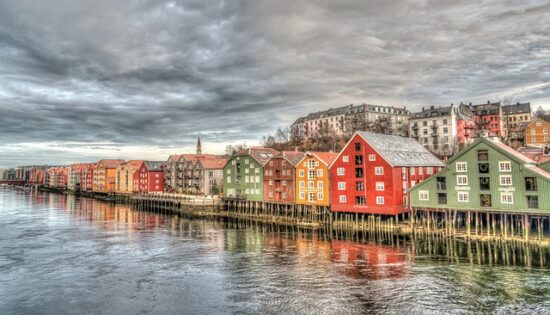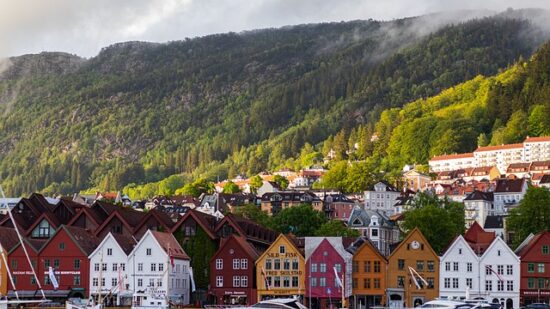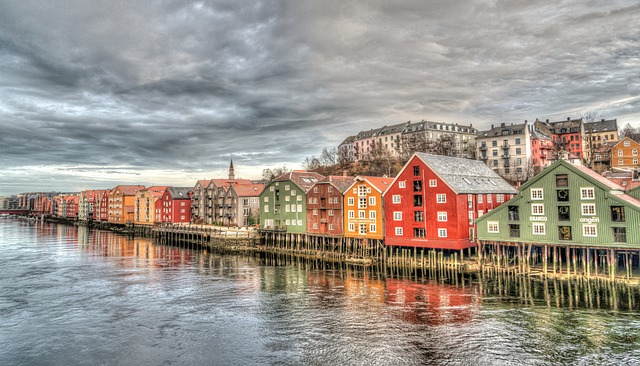The kingdom of Norway is a mountain plateau situated on the peninsula in Northern Europe. Norway shares its borders with Denmark and Sweden alongside some portion of Scandinavia. The country has number of lakes, rivers, ice-capped mountains, and stormy seas, along with snowy and rocky terrain. In addition, the terrain’s soil is highly useful for farming. Norway is the least populated country in Europe but ranks as the fifth largest by area.
Norway Facts For Kids
Introduction
- Name: Kingdom of Norway
- Official Language: Norwegian
- Capital City: Oslo
- Ranking: 4th Largest in Europe by Area
- Currency : Norwegian Krone
- Motto: Everything for Norway
History
- Norwegians have long been anglers and sailors in history. In 800 A.D. these people went out to explore the North Atlantic Ocean.
- Norwegians used to be the great explorers as they discovered Greenland, Iceland, and coast of North America.
- Some say that Norwegians were hunters and they later shifted towards farming.
- Around 900 King Harald Fairhair united Norway in a single kingdom.
- Almost two-thirds of Norway’s population died because of Black Death in 1349.
- The Danish ruled the country from 1380 to 1814.
- Danes ruled Norway for four centuries while Swedes ruled only once.
- Norway emerged as an independent nation in 1905.
- On May 8, 1945 Norway was restored from Germans.
- The country began expanding many of its industries in the Mid-twentieth century.
- In 1969, the offshore oil was discovered which set the highest living standards for Norwegians.

Geography & Size
- Norway is the land of beautiful fjords, lakes, waterfalls, valleys, glaciers, and forests. The total area of Norway is 385,178 square kilometers.
- The total population of the country is 5,136,700 as of 2013 consensus.
- It is 1,089 miles (1,752 km) long from the northernmost tip to the southernmost point.
- Nearly all fjords are located in the Norway’s coast. The length of the coast is 1,647 miles (2,650 km).
- The east border of Norway touches Russia, Sweden, and Finland.
- The average altitude in Norway measures around 1,500 feet (457 m) above sea level.
- Jostedalsbreen is the largest glacier of Europe—except Iceland.
- Geologists believe that the fjords might have formed when glaciers deepened the rivers during Ice Age (2 million to 10,000 years ago).
- Glama is the longest river of Norway measuring 380-miles (611-km) in length. The river starts in the Dovrefjell and ends up in Skagerrak (in Fredrikstad city).
- Oslo is the largest and the capital city of Norway.
- The most noticeable waterways include; Tana Rivers, Alteelva, Namsen, Orkla, Otra, and Lagen in the south.
- Lake Mjosa in the southeastern Norway is the largest lake covering 142 square miles (368 sq. km).
- The coastal lines of Norway are 25,000 to 83,000 kilometers long.
- Mountains, great terrains, and other natural landscapes have dominated the country.
- Fjords are the feature landscapes of Norway. Sognefjorden is one the longest and the deepest fjord—second only to Hornindalsvatnet lake. Sognefjorden is 204 km long.
- Some of the Norwegians mountains are high enough to be covered with ice all year around.
- The forest covers one-fifth of the total country’s land.

Climate
- In general Norway has a warm climate even though certain western parts of the country have a milder climate. The western part often receives rainfall each year.
- The moderate climate is primarily due to the Gulf of Stream which carries 4 – 5 million tons of tropical water annually. The fjords of Norway never freeze completely because of this much water.
- In the North of Arctic Circle sun never sets beneath the horizon. The people have 20 hours of daylight each day. This happens from May to July. As from November to January, sun never rises above the horizon—nights are too long.
People and Cities
- Trondheim is the oldest city of Norway with over 149,000 people living. It is also the third largest city of Norway.
- About 95% of the people speak Norwegian as their first language.
- About 82% people are Christian. Although Norway is least urbanized countries in Europe yet about 75% of the population lives in cities.
- About 7% of the total population makes up the immigrants.
- The average lifespan of men is 76 years while life expectancy for women is 82 years.
- Bergen is the second largest city of Norway with the population of 226,500.
- The ‘Sami People’ are the indigenous people of Norway. The total population of Sami People is 40,000 to 45,000.
Fauna and Flora
- Thanks to the variety of natural landscapes, Norway is home to thousands of animals and plants species. Some of the plants are native to the country and they only grow in the mountainous regions of Norway.
- The country has 90 species of mammals; and 16,000 species of insects.
- Basking shark is the largest fish and sperm whale is the largest predator of Norwegian waters.
- Mosses, dwarf birch, and lichens are the most common plants in Norway.
- The southeast Norway is rich in vegetation as it offers mushrooms, wild berries such as lingonberries, blueberries, and cranberries. This vegetation grows near Oslo Fjord.
- The forests are rich in fir and pine. Deciduous forests in the south and southwest consists of elm, oak, linden, ash, and hazel.
- Norway serves as habitat of 300 birds species. These birds include eagles, falcons, and hawks. Other birds such as gannets, puffins, and gulls, are also found.
- Polar hares, wolves, polar foxes, reindeer, lemmings, and wolverines make up the mammalian kingdom of Norway.
Did You Know…? Norway Facts For Kids
- Norway is the world’s second largest exporter of oil. It exports almost 90% of its oil.
- Great Britain and Netherlands are the major buyers of Norwegian oil.
- The country is one of the five largest natural gas producers in the world. It has 3% of natural gas reserves.
- Norwegians retire at the age of 67.
- There is hardly any poverty gap in Norway as very few people are either very poor or very rich.
- Norway is one of the world’s wealthiest nations as most of its economy is based on oil. It has 5,085 oils in total.
- The north of the Arctic Circle is called ‘The Land of the Midnight Sun’.
- Roald Amundsen (1872 – 1928) had become the world’s first explorer to reach the icy expanses of the South Pole.
- The country’s flag has three colors; cross—blue with white borders, along with the red background.


Leave a Reply